How Much Do Google Ads Cost in 2025? A Complete Guide to CPC, Budgets & ROI

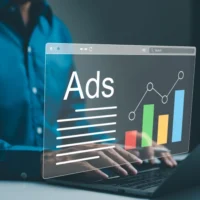
The Real Cost of Google Ads in 2025
Table of Contents
Serious about growing your business? Let’s plan exactly how to get you more leads, sales, and results—faster.
Google Ads continues to be one of the most effective ways for businesses to attract leads and generate sales in 2025.
But here’s the catch: costs are steadily increasing, competition is tougher than ever, and new challenges like privacy restrictions and automation missteps are forcing advertisers to rethink their strategies.
If you’re a business owner or marketer asking, “How much does Google advertising cost in 2025?” the answer is, it depends.
Costs vary widely by industry, keyword intent, and location. However, the latest benchmarks give us a clear picture of what’s normal, what’s changing, and most importantly, how to keep your Google Ads costs under control while maximising ROI.
This guide combines insights from the latest industry benchmarks along with emerging trends in automation, bidding, and ROI management, helping you set realistic expectations and make smarter decisions with your Google Ads budget.
Key Takeaways
-
Average CPC (Search Network)
The average cost per click (CPC) on the Google Search Network in 2025 ranges between $4.51 and $5.26, based on data from WebFX and WordStream/LocaliQ. -
Average Cost per Lead (CPL)
Across all industries, the average cost per lead (CPL) is $70.11. -
Most Expensive Industries
Legal services and other high-value sectors like Dentistry and Home Improvement have the highest average CPCs, while specific high-intent keywords can also be extremely expensive, often exceeding $100 per click. -
Small Business Budgets
As per the latest Wordstream report, many SMBs start with $1,000–$2,500 per month, often scaling once ROI is proven. -
Typical Business Spend
Most companies spend $1K–$10K/month, while large brands often exceed millions annually. -
ROI Satisfaction
54% of businesses report being satisfied with PPC ROI, and 26% plan to increase budgets in 2025. -
Average ROI
On average, businesses earn an 800% return on investment from Google Ads, meaning $8 is returned for every $1 spent. -
Google Display Network
Clicks on the Google Display Network are significantly cheaper, often costing under $1, making it an excellent channel for brand awareness. -
Cost Per Lead (CPL) Is Rising
The average cost per lead (CPL) has risen 5% from 2024 to 2025, following a substantial 24% jump from 2023 to 2024, highlighting the increasing cost of lead acquisition. -
Why Costs Are Rising
Competition, privacy restrictions (like cookie deprecation and iOS tracking limits), and misapplied AI bidding strategies. -
How to Lower Costs
Use first-party data, refine keyword targeting, optimise landing pages, and diversify with SEO + CRM campaigns.
What Is the Current State of Google Ads Costs in 2025?
In 2025, the average cost per click (CPC) sits between $4.51 and $5.26 based on benchmark data from thousands of commercial-intent keywords. On the Google Display Network, clicks remain far cheaper, often under $1, making it a cost-effective choice for brand awareness campaigns.
That said, these averages can be misleading. Google Ads pricing is never one-size-fits-all—it varies significantly depending on industry, location, keyword intent, and account quality.
For example, legal services can exceed $8 per click (with certain high-intent keywords surpassing $100), while arts & entertainment typically averages under $2.
These extremes highlight how much customer lifetime value (CLV) and competition intensity drive CPC. A single legal client may be worth thousands, while entertainment advertisers focus more on reach at lower costs.
But industry alone doesn’t set the price. Other key factors include:
- Geography: A keyword like “emergency plumber” might cost $25 nationally, spike above $60 in competitive metros like Denver, and drop closer to $15 in smaller cities.
- Keyword Intent: Urgent, purchase-driven searches (“near me,” “same day,” “cost”) nearly always cost more than broad, research-focused queries.
- Account Management Quality: Poorly structured accounts, weak ad copy, or slow landing pages inflate CPCs. Optimised campaigns with higher Quality Scores often pay less while securing better positions.
The bottom line? The real question isn’t “how much does a click cost?” but “what do you earn from each click?” Metrics like cost per lead (CPL), return on ad spend (ROAS), and overall ROI give the clearest picture of Google Ads performance in 2025.
Recommend Read: Top Digital Marketing Trends 2025 that Businesses Should Know About
Marketing Research & Strategy
We help you understand your market and build smart strategies to attract more customers and grow faster.
- Detailed research into your competitors, customers, and market
- Custom marketing and growth plans that drive real results
- Clear action steps to increase traffic, leads, and sales
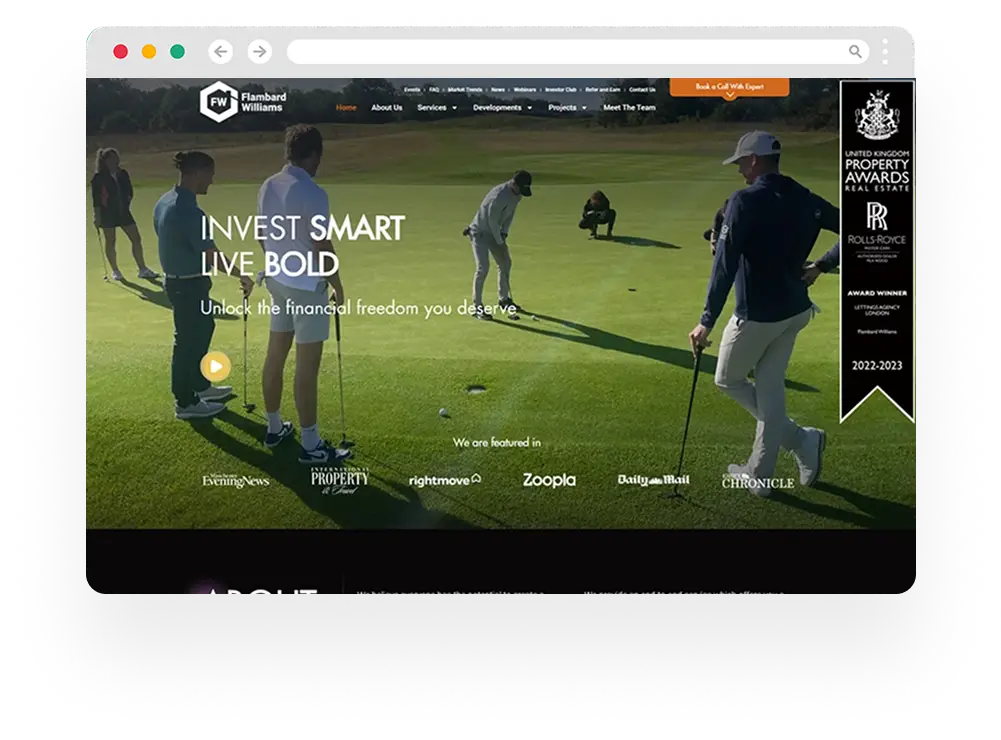
ADWORDS ROI
Cut Ad spend

How Much Do Google Ads Cost by Industry in 2025?
One of the biggest factors influencing Google Ads pricing in 2025 is industry. CPC benchmarks vary widely because customer value, competition, and search demand differ across sectors.
Highest-Competition Industries
These industries have the highest average CPCs on the Google Search Network, with some high-value keywords far exceeding these averages.
- Legal Services: Average CPC is approximately $8.58, although high-intent keywords can exceed $100.
- Dentistry & Dental Services: Averages range from $7–$9.
- Home Improvement & Contractors: CPCs are approximately $7–$8.
- Consumer Services: This category has an average CPC of approximately $6.40.
- Education & Training: Averages are around $6.23.
- Insurance: The average CPC is closer to $3.46 to $5.53, though specific keywords can reach over $100.
These CPCs are driven by high customer lifetime value (CLV), allowing advertisers to bid aggressively. A single legal client or high-value home repair job can be worth thousands in long-term revenue.
Mid-Range Industries
These sectors are also competitive but generally have lower average CPCs than the highest-competition industries.
- Healthcare & Physicians: Averages are around $2.62–$5.00.
- E-commerce & Retail CPCs fall in the $1–$3 range.
- Arts & Entertainment: Clicks are typically under $2, making it a very cost-effective option.
B2B Software Keywords in ERP, inventory management, and SaaS platforms often command premium CPCs despite having relatively low search volumes.
This demonstrates that even niche industries can face high CPCs if the target customer is valuable enough.
Case Study: Dental Implants
In 2025, dental implant keywords surged in cost due to rising demand and competition. This spike shows how quickly keyword economics can change when consumer interest grows.
More searches + more advertisers = higher CPC.
Key Insights:
- High CLV almost always drives higher CPCs. Even moderate-competition markets can become expensive if the payoff per customer is large.
- Not all industries see rising CPCs. Some categories experience year-over-year decreases as competition cools.
- Long-tail, intent-specific keywords usually deliver stronger ROI than broad, high-competition search terms. Targeting queries like “emergency dental implant cost near me” may cost less and convert better than simply bidding on “dental implants.”
Digital Marketing, SEO & PPC
- SEO to boost rankings and capture high-intent, AI-driven traffic
- Performance Marketing to run ROI-focused campaigns that convert
- Content Marketing to drive clicks, earn links, and build authority
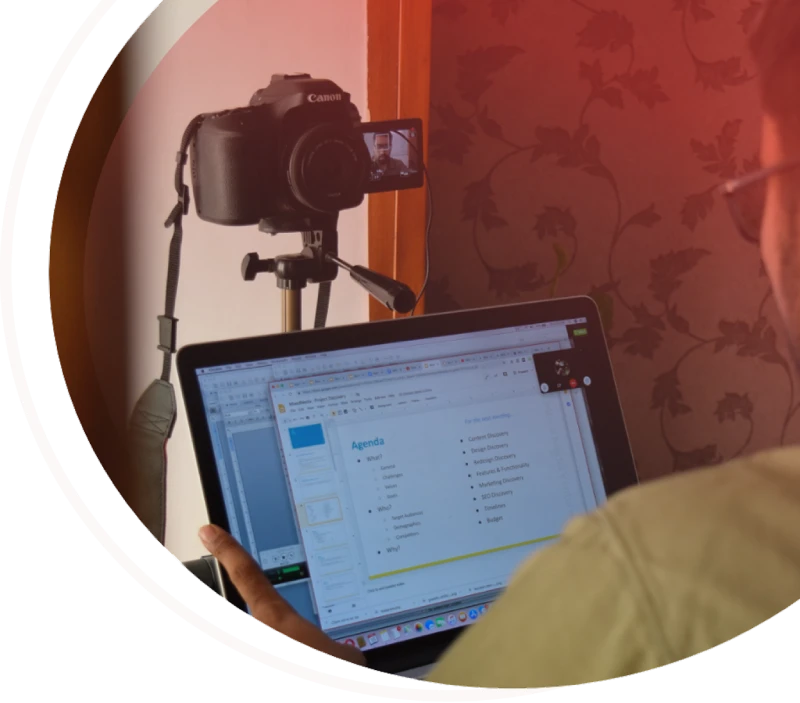
How Much Do Businesses Actually Spend on Google Ads?
When people hear that the average CPC is $4–$5, they often assume that’s what everyone pays. In reality, it’s more mixed. A 2025 survey of 350 businesses shows a wide spread in both budgets and click costs.
Budgets
- 26% spend less than $5,000/month
- 27% spend $5,001–$10,000/month
- 18% spend $10,001–$50,000/month
- 29% spend $50,000+/month
Most small and mid-sized businesses fit comfortably in the $1K–$10K/month range, while large brands push tens of thousands or more.
What Businesses Actually Pay Per Click
- 38% pay just $0.11–$0.50
- 29% pay $0.51–$2.00
- Only 1% pay more than $10
The reality? Most advertisers aren’t paying anywhere near $5 a click. Instead of fighting over the most expensive keywords, successful businesses focus on niche targeting and long-tail searches that bring in leads at a fraction of the cost.
At Credofy, we’ve seen this play out firsthand. We helped a UK property firm cut ad spend by 44% and boost ROI to 438% within just 3 months by focusing on high-intent local searches and optimising landing pages.
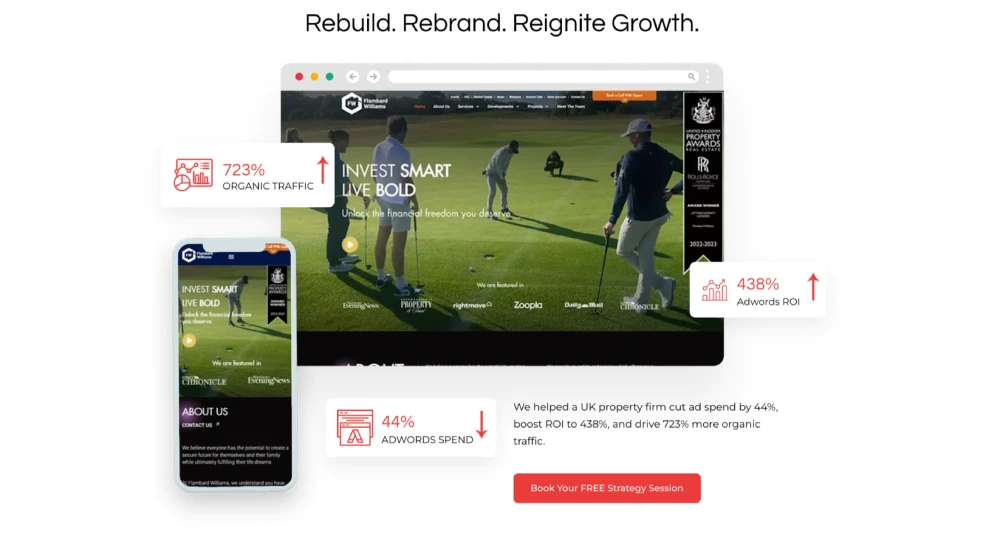
Read Full Case-Study Here: FW Case Study
These kinds of data-driven adjustments are what separate average campaigns from growth engines, proving that with the right strategy, even modest budgets can outperform the benchmarks.
Is Google Ads ROI Worth It in 2025?
Yes, but only if managed strategically.
Google Ads continues to deliver some of the highest returns in digital marketing, but the gap between winners and losers is widening.
- Google benchmarks show the average ROI at 800%, meaning businesses earn $8 for every $1 spent on ads.
- A 2025 survey revealed that 54% of businesses are satisfied with their PPC ROI, while 26% plan to increase ad spend this year, clear evidence that many advertisers see strong returns.
What Successful Advertisers Do Differently
Businesses reporting the best ROI tend to:
- Target niche, intent-driven keywords rather than overspending on broad, ultra-competitive terms.
- Write highly relevant ad copy that directly matches search intent.
- Invest in fast, optimised landing pages that convert clicks into customers.
In short, ROI depends less on how much you spend and more on how strategically you allocate your budget.
If creating effective landing pages feels overwhelming, this in-depth blog will walk you through it step by step: The Complete Guide to Building High-Converting Landing Pages in 2025
Why Are Google Ads Costs Rising in 2025?
Costs are climbing, and not just because of inflation. Data shows the average cost per lead (CPL) rose 5% from 2024 to 2025, following a massive 24% jump from 2023 to 2024.
The Main Drivers of Rising Google Ads Costs
1. Increased Competition
More advertisers are pouring budget into Google Ads, especially around high-intent queries (e.g., “emergency plumber near me”). This pushes CPCs higher across competitive verticals.
2. Privacy Restrictions
The ongoing cookie deprecation and iOS tracking limitations are reducing advertisers’ ability to target precisely. As a result, businesses often pay more to reach the right audience.
3. AI-Driven Bidding Misapplied
Google’s Smart Bidding strategies can be powerful — but only when campaigns have:
- Clean match types
- Sufficient conversion volume
- Strong ad strength and creative
Without these, automated bidding often inflates CPCs instead of lowering them.
Understanding these factors helps advertisers identify where spend is being wasted — and where to tighten strategy to keep costs sustainable.
How Will AI Overviews/‘AI Mode’ Affect Google Ads in 2025?
Google’s AI Overviews and AI Mode are among the biggest shifts in search visibility this year.
Instead of showing only traditional links, AI Mode compresses information into summary boxes at the top of results, with new ad slots appearing inside and around these modules.
This is changing how impressions, clicks, and conversions flow across the funnel.
What’s Changing?
- Search Behaviour: Over 60% of searches now end without a traditional click, a trend accelerated by AI Overviews giving direct answers.
- Traffic Mix: Early studies show that a 25% drop in organic traffic for some informational queries, with that volume shifting to ads and Google surfaces, and this trend is expected to continue into 2026.
- Auction Dynamics: Google is testing new ad formats within AI Overviews, creating added competition for limited placements.
- Attribution: With journeys blending across Search, Performance Max, YouTube, and Discover, first-party data and modelled conversions are essential for measuring ROI.
How to Adapt Now?
- Expand campaigns beyond head terms by targeting questions and conversational long-tail keywords that AI Mode often surfaces.
- Strengthen brand and defensive campaigns to protect visibility when AI Overviews display competitive options.
- Feed high-quality assets (product feeds, images, videos) into Performance Max for better placement across Google’s new surfaces.
- Use structured content like FAQs and schema markup so your ads and pages remain highly relevant in AI-influenced SERPs.
The Upside?
While AI Mode compresses more information upfront, it’s also filtering intent more effectively.
Early tests suggest businesses running structured campaigns are seeing higher-quality leads from AI-driven placements, as the ads tend to appear alongside highly specific queries.
For businesses willing to adapt, AI Mode is less a threat and more a new opportunity to capture qualified demand.
Learn the exact strategies to win visibility and leads with AI Mode in our latest guide: How to Rank #1 in Google AI Mode (Complete Guide)
Marketing Research & Strategy
We help you understand your market and build smart strategies to attract more customers and grow faster.
- Detailed research into your competitors, customers, and market
- Custom marketing and growth plans that drive real results
- Clear action steps to increase traffic, leads, and sales

ADWORDS ROI
Cut Ad spend

How Does Google Determine Your CPC?
Google Ads isn’t a simple pay-to-play system — it’s an auction where quality often beats budget. The amount you actually pay per click (CPC) depends on several key factors:
- Ad Relevance: How closely your ad copy matches the searcher’s keyword intent.
- Expected CTR (Click-Through Rate): Google predicts how likely users are to click your ad.
- Landing Page Experience: Is your page fast, relevant, and useful? A poor landing page can raise costs, even if your bid is high.
CPC Formula Recap
- Ad Rank = Quality Score × Max Bid
- Actual CPC = (Ad Rank of competitor below ÷ Your Quality Score) + $0.01
Translation: A small business with highly relevant ads and optimised landing pages can outrank big-budget competitors, and pay less per click while doing it.
Latest Read: 20 Advanced Lead Generation Strategies to Secure High-Quality Leads in 2025
How Much Should You Budget for Google Ads in 2025?
Budgeting is one of the biggest concerns for business owners entering Google Ads in 2025. The right amount depends on your size, industry, and goals — but the following ranges offer realistic benchmarks:
- Small businesses (SMBs): Start with $1,000–$2,500/month (about $20–$50/day) to test campaigns and gather performance data.
- Mid-size companies & agencies: Typically spend $7,000–$30,000/month to scale results.
- Large brands: Can exceed $40M annually in competitive sectors
Budgeting Tips for 2025
- Tie spend to customer lifetime value (CLV): If one new client is worth $5,000, paying $200 per lead may still be profitable.
- Prioritise high-margin products/services: Dedicate more of your ad budget to offerings that deliver the biggest returns.
- Understand Google’s daily budget rules: Google may spend up to 2× your daily budget on high-opportunity days, but it won’t exceed your monthly cap (daily budget × 30.4).
Start small, track ROI closely, and scale only when campaigns prove profitable.
Digital Marketing, SEO & PPC
- SEO to boost rankings and capture high-intent, AI-driven traffic
- Performance Marketing to run ROI-focused campaigns that convert
- Content Marketing to drive clicks, earn links, and build authority

How Much Do Google Ads Cost in the UK in 2025?
If you’re a UK business owner wondering, “How much does Google advertising cost in the UK?” — the answer is that it varies by industry, keyword intent, and campaign type. But the latest benchmarks provide a clear starting point.
Average Google Ads Costs in the UK (2025)
- Average CPC (cost per click): £1–£6 across most industries. However, highly competitive sectors like legal and finance regularly exceed £20 per click.
- Average CPM (cost per 1,000 views): £6–£10 for display ads, making them a cost-effective way to build brand awareness.
- Typical SMB budget: Many UK small businesses start with £800–£2,000/month and scale higher once campaigns prove profitable.
Common UK Queries Answered
-
How much does Google advertising cost UK?
Most SMBs spend £1K–£10K/month depending on industry and goals. -
How much does 1,000 views cost on Google Ads?
On average, £6–£10 CPM for display ads. -
Is Google Ads worth it in the UK?
Yes. Even with rising CPCs, Google Ads remains profitable when businesses focus on niche keywords, optimise for relevance, and track conversions properly. Many UK companies report strong ROI, especially in local service industries like trades, healthcare, and professional services.
UK advertisers who approach Google Ads strategically can still achieve strong returns — even as costs climb.
Must Read: How to Rank #1 on Google & Generate Free Leads in 2025
What ROI Can You Expect from Google Ads in 2025?
The return on investment from Google Ads in 2025 remains strong, but it depends heavily on your industry and approach. On average, businesses see about 800% ROI—roughly £8 returned for every £1 spent.
According to recent surveys, 54% of advertisers are satisfied with PPC performance, and 26% plan to increase spend this year, showing that rising costs haven’t stopped businesses from finding value.
That said, ROI varies across industries. High-ticket sectors like legal, finance, and B2B software tolerate higher CPCs because one client can generate thousands in revenue.
Local services such as plumbing, dentistry, and home repairs thrive with geo-targeted, niche keywords, while e-commerce brands often see stronger ROI when combining Google Shopping Ads with remarketing to capture both new and repeat buyers.
For example, we helped a London-based artificial grass company grow their Adwords ROI by 1,641% and increase online profit by 20x.
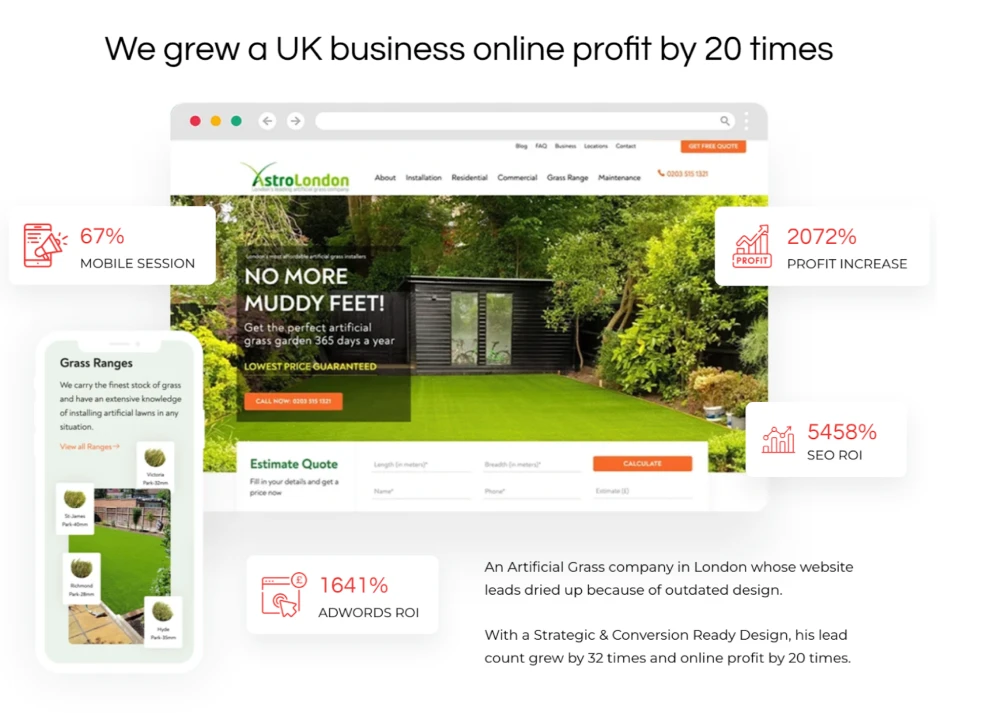
Read Full Case-Study Here: Astrolondon Case Study
Through conversion-focused design and strategic PPC management, their lead volume grew 32x, proving that even in competitive markets, the right strategy can multiply returns dramatically.
The businesses seeing the best results are those that double down on long-tail, intent-driven keywords and pair Google Ads with consistent lead nurturing through email, SMS, or CRM automation.
What Mistakes Make Google Ads More Expensive?
While Google Ads costs are rising due to competition and market trends, many advertisers make mistakes that push costs even higher. The most common include:
- Ignoring negative keywords → Without exclusions, ads trigger for irrelevant searches, wasting budget on unqualified clicks.
- Over-relying on Smart Bidding too early → Automation needs reliable conversion data; without it, Google overspends on poor-quality traffic.
- Weak ad copy & poor landing pages → Low relevance and slow-loading pages reduce Quality Score, directly raising CPCs.
- Incomplete conversion tracking → Without proper tracking, Google optimises for clicks instead of real leads or sales.
- Broad, unfocused targeting → Ads shown to the wrong locations, devices, or audiences result in wasted spend and low ROI.
Google Ads doesn’t just become expensive because of competition—it becomes expensive when campaigns are mismanaged. With better tracking, sharper targeting, and higher-quality ads, even competitive industries can be approached profitably.
Marketing Research & Strategy
We help you understand your market and build smart strategies to attract more customers and grow faster.
- Detailed research into your competitors, customers, and market
- Custom marketing and growth plans that drive real results
- Clear action steps to increase traffic, leads, and sales

ADWORDS ROI
Cut Ad spend

How Can You Keep Google Ads Costs Low in 2025?
Rising CPCs don’t have to mean shrinking margins.
The most successful advertisers in 2025 are those who combine data-driven targeting, smarter bidding, and cross-channel diversification to get more value from every pound (or dollar) spent.
Here’s how you can do the same:
1. Collect & Use First-Party Data
With cookies fading and privacy restrictions tightening, first-party data is becoming one of the most valuable tools in your marketing stack. Businesses that own their audience through email lists and CRMs are less dependent on expensive third-party targeting.
- Build email lists through newsletters, promotions, and gated content.
- Offer lead magnets like guides, calculators, or webinars to encourage sign-ups.
- Use CRM platforms (e.g., HubSpot, Zoho, Dash) to segment audiences and follow up effectively.
The more data you own, the less you rely on Google to “find” your audience at high costs.
2. Qualify & Follow Up on Leads
Not every click is equal. If you’re paying £5–£20 for each, you can’t afford to treat all leads the same.
- Build buyer personas to understand who your most profitable customers are.
- Use urgency, clarity, or tease an offer to maximise interest.
- Ensure your subject and preheader complement each other (think of them as a matched pair).
By focusing on lead quality rather than raw volume, you can reduce your cost per acquisition (CPA) even if CPCs rise.
3. Use AI — the Right Way
AI is transforming Google Ads, but it can also waste money if left unchecked. The trick is using it where it adds efficiency, not as a “set and forget” solution.
- Run creative and landing page tests with AI tools to improve Quality Score.
- Use Smart Bidding only when you have reliable conversion data; otherwise, stick to manual or enhanced CPC.
- Pair Performance Max + Search campaigns to capture both new and existing demand.
- Deploy AI chatbots and nurture flows to convert more of the leads you’re already paying for.
Done right, AI boosts relevance, click-through rates (CTR), and conversion rates — all of which lower effective costs.
4. Refine Keyword Strategy
Keyword management remains one of the most effective levers for cost control. Many advertisers lose thousands each month simply by bidding too broadly.
- Run regular audits to pause underperforming terms.
- Build out negative keyword lists to block irrelevant clicks.
- Target long-tail, intent-driven keywords (e.g., “emergency plumber in Manchester” vs. just “plumber”).
- Match type strategy: exact/phrase for small budgets, broad match + Smart Bidding for scaling.
This approach filters out wasted clicks and ensures spend goes where it’s most profitable.
5. Diversify with Lower-Funnel Strategies
Relying only on Google Ads puts pressure on CPCs. The smartest advertisers in 2025 are building a full-funnel, cross-channel system.
- Invest in SEO and inbound content to reduce dependence on paid clicks.
- Run CRM-based campaigns (email, SMS, loyalty) to retain customers at a fraction of acquisition costs.
- Build communities on LinkedIn, Discord, or Reddit where engagement is organic and brand trust grows outside of paid ads.
This diversification means Google Ads doesn’t carry your entire acquisition burden, lowering overall costs per customer.
Digital Marketing, SEO & PPC
- SEO to boost rankings and capture high-intent, AI-driven traffic
- Performance Marketing to run ROI-focused campaigns that convert
- Content Marketing to drive clicks, earn links, and build authority

Struggling with rising Google Ads costs, but still need more leads?
In 2025, Google Ads is more expensive than ever, but also more rewarding for advertisers who adapt. Rising CPCs, stricter privacy rules, and the rollout of AI Overviews mean success isn’t about spending the most; it’s about spending the smartest.
Advertisers that refine keyword targeting, embrace first-party data, optimise landing pages, and align campaigns with AI-driven surfaces are consistently seeing stronger ROI.
Yes, the gap between winners and losers is widening, but the upside is clear: AI Overviews may reduce some organic visibility, but they’re also helping businesses capture higher-quality, intent-rich leads through smarter placements.
For SMBs and global brands alike, Google Ads remains a growth engine if managed with discipline, creativity, and adaptability.
At Credofy, we’ve spent 8+ years helping UK businesses cut wasted spend by up to 50% while doubling qualified leads.
If you want more customers without overspending, book a free strategy call now here. We’ll show you exactly how to turn Google Ads into a predictable growth engine.
FAQs on Email Marketing in 2025
How do Google Ads work step by step?
Google Ads runs an auction whenever someone searches. You pick keywords, write ads, and set bids. Google calculates Ad Rank = Quality Score × Max Bid to decide which ads show and in what order. You typically pay per click (PPC) or per thousand views (CPM). Performance data then guides optimisation of keywords, bids, audiences, and landing pages to improve ROI.
How much does Google Ads cost?
Costs vary by industry, intent, and location. In 2025, the average search CPC is $4.51–$5.26 (≈£3.50–£4.10). Competitive sectors like legal and insurance can exceed £20–£60 per click. Display clicks are cheaper, usually under £1. Budget needs depend on goals; many small businesses start around £800–£2,000/month and scale with proven ROI.
How much does Google Ads cost per 1,000 views?
On the Google Display Network, you can buy impressions using CPM. In the UK, typical CPM is £6–£10 in 2025, influenced by audience targeting, placements, and seasonality. CPM is effective for awareness, remarketing, and top-of-funnel goals, while search PPC is better for direct-response intent. Many advertisers use both to balance reach and conversions.
Is $5 a day enough for Google Ads?
$5/day (≈£4/day) is usually too low for consistent results. You might only get a few clicks and limited data, slowing optimisation. Most SMBs see better momentum at $20–$50/day (£15–£40/day), focused on a tight keyword set, clear location targeting, and a single conversion goal. Start lean, measure cost per lead, and scale winners.
Are Google Ads still worth it in 2025?
Yes—when managed well. Despite rising CPCs, advertisers report strong performance, with average returns around 8:1 in many cases. Success depends on matching high-intent keywords with relevant ads, fast landing pages, strong tracking, and disciplined negatives. For UK SMBs, Google Ads remains one of the fastest channels to generate qualified leads at scale.
Do Google Ads work for small businesses?
Absolutely. Many UK SMBs invest £800–£2,000/month and get reliable leads by focusing on local intent, service-specific terms, and tight geotargeting. Use conversion tracking, call tracking, and negative keywords to reduce waste. Pair search with remarketing and a simple nurture flow (email/SMS) to lift close rates and lower overall acquisition costs.
Can I run Google Ads without a website?
Yes. Local businesses can advertise via Smart Campaigns linked to a Google Business Profile, driving calls and directions without a website. However, a dedicated landing page typically improves Quality Score, control over messaging, and conversion rate. If you can, launch a lightweight, fast page tailored to your offer and tracking needs.
Can I stop Google Ads at any time?
Yes. Campaigns can be paused or stopped instantly, and you only pay for clicks or impressions already delivered. Budgets are flexible, so you can scale up for seasonality, pause during low-demand periods, or shift spend between campaigns. Use budget reports and automated rules to control pacing and avoid month-end surprises.
When should you use Google Ads?
Use Google Ads when you need immediate demand capture, especially for high-intent searches (e.g., “emergency dentist near me”). It’s ideal for testing offers, launching locally, or filling the pipeline while SEO ramps up. Combine with remarketing and Performance Max to extend reach across YouTube, Display, Maps, and Shopping for full-funnel coverage.
When does Google Ads charge you?
Google charges when you hit a billing threshold (which increases with account history) or every 30 days, whichever comes first. You’ll see line-items for clicks (PPC) or impressions (CPM), taxes/VAT where applicable, and any promotions/credits. Keep a valid payment method on file and enable alerts to avoid accidental pauses.
How long until Google Ads work?
Many accounts see early results within 7–14 days, but meaningful optimisation typically needs 4–6 weeks of data. Expect the first month to focus on testing keywords, creatives, and bids; consistent ROI often emerges after 2–3 months of iterative improvements, stronger negatives, and landing page refinements. Track leads and quality, not just clicks.
Where are Google Ads shown?
Ads can appear across Google’s ecosystem: Search (results pages), Display (websites/apps/YouTube), Shopping (product listings), Maps/Local (Business Profiles), and Performance Max (all placements using automation). You control networks, locations, devices, and schedules. Choose placements based on goals—search for intent, display/YouTube for awareness and remarketing.




